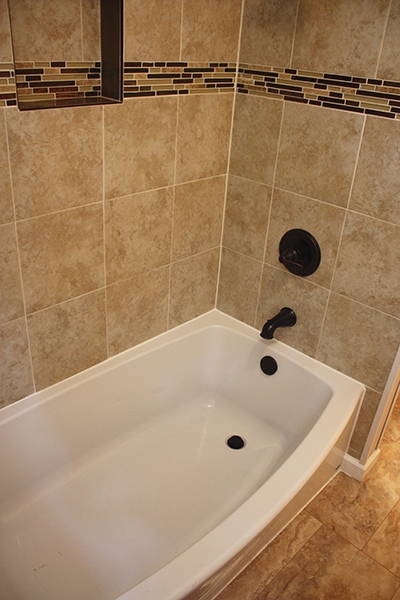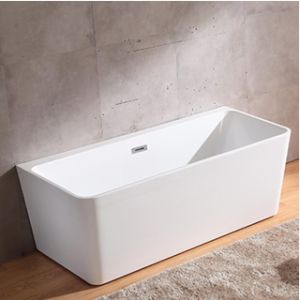Plumbing 101: A Necessity for Bathtub Installation
Plumbing 101: A Necessity for Bathtub Installation
Blog Article
What're your thoughts and feelings on Tools You Need to Install a New Bathtub ?

Installing a tub isn't exactly brain surgery, yet it does call for solid plumbing, carpentry, and often, tiling abilities. Changing an old bath tub with a brand-new one is also a moderately difficult project. If the old tub is conveniently accessible, the project can move quickly; if you have to open up a wall surface to get rid of the old bathtub as well as place the brand-new bath tub, the job is much harder. In either case, the project is within a home handyman's abilities, although you will require an assistant to vacate the old bathtub and set in the brand-new one. Make certain you have certified on your own for the job and also are comfortable attempting it. As opposed to hiring a professional to take control of a halfway-completed project, it is much better to take into consideration utilizing one before you begin. Chances are you may need an expert plumber to make tube links.
This write-up will certainly help you set up a brand-new bath tub in your washroom if you have already purchased a brand-new tub and do not require to alter the arrangement of your previous supply of water pipelines.
Your tools and product list ought to make up the following:
Removing Old Touches
If you need to replace old faucets with new ones as a part of your installment, after that the first thing you ought to do is disconnect the water supply. After doing so, turn on the taps to drain any water remaining in the system. The procedure of getting rid of the existing faucets can be rather troublesome because of the limited accessibility that is usually the instance.
Utilize a basin wrench (crowsfoot spanner) or a faucet tool to reverse the nut that links the supply pipes to the taps. Have a cloth ready for the continuing to be water that will certainly originate from the pipelines. When the supply pipelines have been gotten rid of, use the exact same tool to loosen the nut that holds the taps onto the bath/basin. You will certainly require to stop the single faucets from transforming during this process. Once the faucets have been removed, the holes in the bath/basin will need to be cleaned up of any old securing compound.
Before going on to fit the new faucets, compare the pipeline connections on the old faucets to the new faucets. If the old faucets are longer than the new faucets, after that a shank adapter is required for the new faucets to fit.
Suitable New Taps
If the tails of the brand-new taps are plastic, after that you will certainly require a plastic adapter to stop damage to the string. One end of the port fits on the plastic tail of the faucet and also the various other end gives a connection to the existing supply pipes.
If you require to fit a monobloc, after that you will certainly call for lowering couplers, which attaches the 10mm pipe of the monobloc to the conventional 15mm supply pipe.
Next, position the faucet in the placing opening in the bath/basin making certain that the washers are in area between the tap and the sink. Safeguard the faucet in place with the manufacturer given backnut. As soon as the tap is safely in place, the supply pipelines can be linked to the tails of the taps. The faucets can either be connected by using corrugated copper piping or with regular tap adapters. The former kind should be attached to the tap finishes first, tightening up only by hand. The supply pipelines can later be attached to the other end. Tighten up both ends with a spanner after both ends have been linked.
Installing the Tub
Making use of the two wood boards under its feet, position the tub in the called for position. The wood boards are valuable in evenly spreading the weight of the tub over the area of the boards as opposed to concentrating all the weight onto 4 tiny factors.
The following goal is to make certain that the bathtub is leveled all round. This can be accomplished by examining the spirit level and readjusting the feet on the bathtub up until the level reviews level.
To install taps, fit all-time low of the furthest versatile tap port to the proper supply pipeline by making a compression sign up with; after that do the very same for the various other faucet.
Switch on the supply of water as well as inspect all joints and brand-new pipework for leaks and tighten them if required. Fill the bath tub and additionally inspect the overflow electrical outlet as well as the normal outlet for leakages.
Finally, take care of the bathroom paneling as described in the supplier's user's manual. Tiling and sealing around the tub should wait until the bath tub has actually been made use of a minimum of once as this will certainly settle it into its final placement.
Preparing for the Installment
Firstly, the supporting structure provided with the bath must be fitted (if needed) according to the producer's guidelines. Next off, fit the taps or mixer to the bath tub. When suitable the tap block, it is necessary to ensure that if the tap comes with a plastic washer, it is fitted between the bath as well as the taps. On a plastic bath, it is additionally practical to fit a supporting plate under the taps system to avoid strain on the tub.
Fit the versatile tap ports to the bottom of both faucets making use of 2 nuts and olives (occasionally provided with the tub). Fit the plug-hole outlet by smearing mastic filler round the sink outlet opening, and after that pass the electrical outlet with the hole in the bathroom. Make use of the nut supplied by the maker to fit the plug-hole. Check out the plug-hole electrical outlet for an inlet on the side for the overflow pipeline.
Next off, fit the end of the adaptable overflow pipeline to the overflow outlet. Afterwards, screw the pipe to the overflow face which need to be fitted inside the bathroom. Ensure you make use of every one of the supplied washers.
Connect the trap to the bottom of the waste outlet on the tub by winding the thread of the waste outlet with silicone mastic or PTFE tape, as well as screw on the catch to the outlet. Attach the bottom of the overflow tube in a comparable manner.The bathroom ought to currently prepare to be fitted in its last placement.
Tiling Around the Tub
In the location where the bath meets the ceramic tile, it is required to seal the joins with a silicone rubber caulking. This is essential as the installation can move enough to fracture a rigid seal, triggering the water to pass through the wall between the bathroom and also the tiling, bring about issues with moisture as well as feasible leakages to the ceiling listed below.
You can pick from a variety of coloured sealers to assimilate your fixtures and installations. They are sold in tubes as well as cartridges, as well as can securing voids as much as a size of 3mm (1/8 inch). If you have a bigger gap to load, you can load it with spins of soaked newspaper or soft rope. Bear in mind to always load the bathtub with water before sealing, to allow for the motion experienced when the bathtub is in usage. The sealer can split rather early if you do not take into account this motion prior to sealing.
Additionally, ceramic coving or quadrant floor tiles can be used to edge the bathroom or shower tray. Plastic strips of coving, which are easy to use and also reduce to size, are also quickly available on the market. It is suggested to fit the ceramic tiles using waterproof or water resistant adhesive and also grout.
Bathtub Installation
How Important Is A Bathtub To Your Home?
High-quality baths, showers, and other bathroom updates are necessary when considering a smart investment in your home. It’s a room that you go to every day and one that is constantly being used by guests.The bathroom is one of the top trafficked rooms in a home and also one of the most valuable in terms of home resale.
Install Piping Before Tub
You will be using your existing drain and waste vent system, but pipes required include the hot and cold water supply lines and a pipe leading to a shower head. A mixing valve and shower head are also needed. Air chambers may be required.
Position the Tub
Lower the tub into place so that the continuous flange fits against the wall studs and rests on 1’x4' or 2’x4' supports. Anchor the tub to the enclosure with nails or screws inserted through the flanges into the studs.
NOTE: Remember, bathtubs and shower stalls may require support framing. A bathtub filled with water is extremely heavy, so check building codes and framing support before installing the tub.
Assemble Drain Connections
Assemble the bathtub drain connections by connecting the tub overflow with the tub drain above the trap, not beyond it. The trap will have a compression fitting that screws over the arm of the overflow assembly.
Place a Pipe For the Shower Head
First, locate a brass female threaded winged fitting and attach it to a framing support via a screw or a nail. Then run a pipe up the wall for the shower head. Sweat or solder the other side of the brass fitting to the top of the pipe.
Attaching Hot and Cold Water Lines
Attach your water lines for both hot and cold by sweating these directly into the hot and cold ports of the mixing valve. The mixing valve will be how water enters the tub’s system, not by the pipes themselves.
Install the Spout
Extend a piece of 1/2 inch pipe, or whichever length is specified in the manufacturer’s instructions, for the tub spout. Sweat on a male threaded fitting at the end of the pipe or use a brass nipple of the proper length and a 1/2 inch cap.
NOTE: At this point you should have your rough-in plumbing work inspected before proceeding further.
Check For Leaks
Restore the water pressure and check the drain connection and the supply pipes for any sign of leaking.
estore the Bathroom Wall
Replace the wall with moisture-resistant drywall as a base for your wall covering. Seal the joints between the wall and your new tub with silicone caulk as protection against water seepage.
https://www.berkeys.com/2016/12/02/bathtub-installation-dallas/

I discovered that blog entry on Tools You Need to Install a New Bathtub when doing a lookup on the search engines. For those who enjoyed reading our page plz do not forget to pass it around. Thanks a lot for taking the time to read it.
Secure efficient service. Report this page